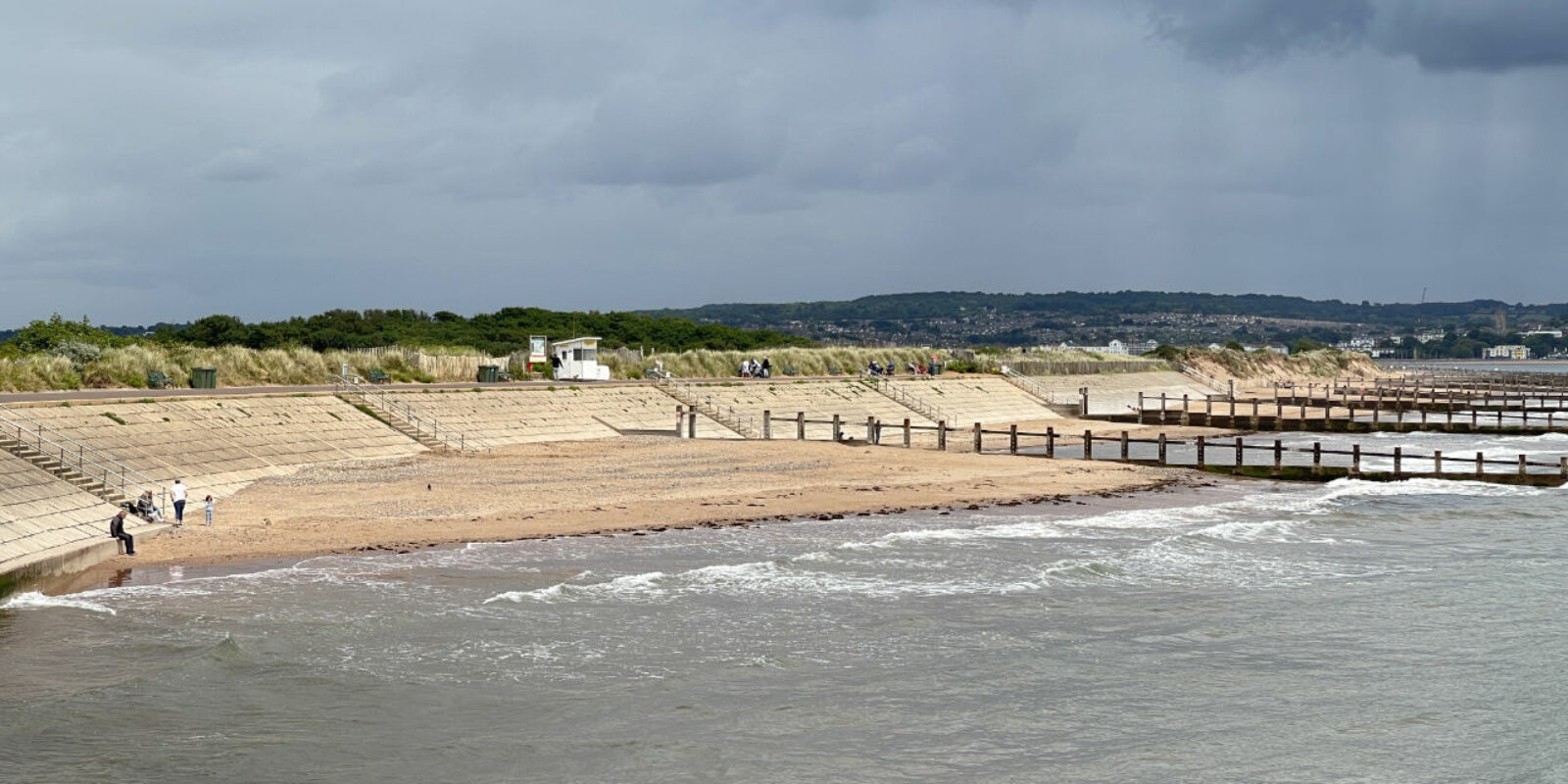All photos and images are copyright protected. Digital images and prints are available for purchase, please use the contact page or leave us a message below. All rights reserved
There’s something enduringly special about the great British seaside, and Dawlish Warren in Devon delivers all the charm you’d hope for — with a few unexpected twists. On a recent visit, we found ourselves immersed in a cheerful, bustling atmosphere of sand, sea air, and seaside nostalgia, accompanied by our ever-curious Yorkshire Terrier, Ollie.
With the tide high and the sound of gulls overhead, we strolled past colourful clothing shops and lifestyle stores, stopped for refreshments near the lively promenade, and soaked up the easy-going energy of a true coastal holiday spot. Families laughed around picnic tables, children raced go-karts at the permanent fairground, and the smell of chips and sweet treats drifted through the air.
But beyond the sandcastles and souvenir stalls, Dawlish Warren offers something more: a striking red sandstone outcrop known as Langstone Rock, a walking path that runs between crashing waves and speeding trains, and the ghost of a long-forgotten transport dream — the atmospheric railway. Here, history and leisure intertwine in a way that’s uniquely Devon.
In this article, we’ll take you through our day: from the shops and amusements to the scenic coastal walk, from Ollie’s seaside explorations to the fascinating tales of a bygone railway experiment. Whether you’re planning a visit or simply daydreaming about the coast, Dawlish Warren promises a blend of natural beauty, traditional fun, and historical intrigue that’s hard to resist.
Arrival at Dawlish Warren
We arrived at Dawlish Warren by car, making the short and easy 30-minute drive from Exeter. It’s a scenic route, and as you get closer, the landscape shifts into a familiar coastal rhythm — sea glimpses through hedgerows, bright signage for local attractions, and that subtle, salty scent in the air that tells you the sea isn’t far off.
For those not travelling by car, Dawlish Warren is also well connected by rail. The Dawlish Warren train station (Google Maps) sits just a short walk from the beach, served by the Riviera Line between Exeter and Paignton, making it a convenient option for day-trippers or visitors without transport.
We parked at the Dawlish Warren Seaward Car Park, which, as we later discovered, is one of the most direct access points to both the beach and the nearby golf course. To get there, we drove under the railway tracks — a fun little tunnel that brings you right into the heart of the seaside action. On either side, the road is flanked by ice cream vendors, food stalls, and a few family-friendly amusements — a prelude to the fun that lies ahead.
Using the RingGo app, we paid £4 for two hours of parking, which felt like great value given the location. The car park is spacious and well laid out, with signs pointing clearly to the beach access paths and other attractions. From here, you’re only a short walk away from the bustling promenade, the amusements, the fairground, and the start of the path that leads out to Langstone Rock. It’s a convenient base to begin exploring all that Dawlish Warren has to offer.
A Classic British Seaside Atmosphere
Stepping out of the car and into Dawlish Warren’s seaside hub, we were immediately immersed in the sights, sounds, and smells of a traditional British beach day. The tide was high and the sea gleamed just beyond the shops and stalls, creating that unmistakable mix of breeze, excitement, and coastal energy.
We wandered through the central promenade area where clothing and lifestyle shops offered everything from floppy sun hats and beach mats to novelty seaside gifts. Families queued for soft-serve ice cream, teenagers browsed through racks of summer dresses and hoodies, and everywhere there was a sense of relaxed joy. It felt familiar and nostalgic, but alive with the laughter and chatter of new memories being made.
Alongside the shops were food stalls selling seaside favourites — chips, pasties, fresh doughnuts, candy floss. The aroma of fried food and sugary treats mingled with the sea air. Nearby, a restaurant and pub buzzed with holidaymakers enjoying drinks on the outdoor terrace, while dogs sat patiently under tables, tails wagging.
There’s something very particular about the atmosphere of Dawlish Warren: not overly commercial or polished, but warm, easy-going, and just the right level of lively. The rhythm of waves, clinking cutlery, and the occasional whistle from the fairground rides all blended into a soundtrack that somehow makes you slow down, breathe more deeply, and soak in the moment.
For anyone seeking that authentic, unpretentious coastal charm — where you can dip your toes in the sea, grab a cone of chips, browse a beach shop and let the kids (or the dog) run wild — Dawlish Warren delivers beautifully.
Funfair and Family-Friendly Attractions
Just a few steps from the main promenade lies one of Dawlish Warren’s most unmistakable features — the permanent fairground, a cheerful hub of family-friendly fun. With its colourful signs, flashing lights, and soundtrack of laughter and arcade jingles, it instantly draws the eye and sets the tone for classic seaside entertainment.
We watched families flock to the rides, from spinning teacups to small rollercoasters, and young children lining up excitedly for bumper cars and trampolines. One of the biggest hits seemed to be the go-kart track, where kids (and a few competitive adults) raced around with delighted concentration. The atmosphere was playful and inclusive, with plenty of attractions for all ages.
Even if you’re not one for rides, the fairground adds an unmistakable buzz to the area — it feels alive and vibrant, especially in the warmer months. Nearby, arcade halls and games offered a chance to win a stuffed toy or play a round of air hockey. Ollie was particularly fascinated by the noise and motion, his head tilting curiously every time a bell rang or a car sped past.
The beauty of Dawlish Warren is that everything feels close-knit: the fair isn’t separated from the beach or promenade, but woven into the experience. It’s perfectly possible to grab a coffee, watch the kids on the rides, and still hear the waves crashing just behind you.
For families, the fairground offers an extra layer of enjoyment that’s hard to resist — whether it’s the thrill of a spin on a ride, the satisfaction of winning a game, or simply watching the joy on children’s faces as they run from one attraction to the next.
Walk to the Red Rock Formation
After soaking in the buzz of the fair and promenade, we decided to explore a quieter and more scenic side of Dawlish Warren — the coastal walk towards the red rock formation known as Langstone Rock.
The walk begins just past the main beach area and follows a paved path that runs between two impressive features: on one side, the coastal wave barrier holding back the sea; on the other, the mainline railway that links Exeter to the south Devon coast. It’s an unusual and striking setting — with waves occasionally crashing against the wall to your left and trains thundering by just metres to your right.
This short but memorable route is a treat for train lovers and coastal walkers alike. During our walk, we saw several trains pass in both directions, each seemingly within arm’s reach. The sound and motion added a sense of energy to the walk — and it’s a reminder of how close the railway hugs the coast along this stretch of Devon.
The path gradually curves as you approach Langstone Rock, an eye-catching red sandstone stack that juts out from the beach. Its rich terracotta tones are particularly vivid in sunlight, and it creates a dramatic backdrop against the blue-grey sea. The rock marks the beginning of Langstone Cliff, part of the Jurassic Coast’s ancient geological story, and stands as a natural marker at the edge of the Warren.
At the base of the walk near the rock, we came upon a small café serving teas, coffees, and an inviting selection of cakes. With picnic benches arranged outside, it’s a lovely place to stop and rest — especially for those walking with dogs or children. Ollie happily curled up at our feet while we enjoyed a slice of Victoria sponge and watched the world go by.
The walk to Langstone Rock is not just a chance to stretch your legs; it’s a peaceful, scenic contrast to the main beach area, with layers of history, geology, and railway drama all rolled into one.
Langstone Rock: The Iconic Red Stack
Standing at the far end of Dawlish Warren’s beach, Langstone Rock is more than just a striking photo opportunity — it’s a geological monument and a natural landmark that’s become part of the area’s identity. Rising boldly from the sand, its deep red hue is instantly recognisable and a stark contrast to the softer tones of the surrounding beach and sea.
Langstone Rock is composed of Permian red sandstone, a material that’s characteristic of the Devon coastline. Its rich colouring comes from iron oxide, giving it that warm, earthy tone that seems to glow at sunrise or sunset. Over thousands of years, wind and waves have shaped it into its current rugged form, and although erosion continues, the rock remains a powerful visual anchor at the edge of the Warren.
Visitors often climb the gentle slope of the surrounding path to get closer, and from the top, there are panoramic views across the Exe Estuary to Exmouth and out over the English Channel. It’s also a popular vantage point for watching trains run dramatically along the cliffside tracks below.
Langstone Rock marks the end of the beach’s accessible stretch and the beginning of the more rugged coastline beyond. For dog walkers, photographers, and anyone drawn to natural drama, it’s an unforgettable spot — especially when the tide is low and the surrounding beach reveals tidal pools and sandy flats.
We lingered here for a while, taking in the sea breeze and watching the waves lap gently against the shore. Ollie sniffed curiously at tufts of grass and driftwood while we enjoyed the peacefulness of this wilder edge of Dawlish Warren. It’s easy to see why Langstone Rock has become a symbol of the area — resilient, eye-catching, and timeless.
Trains and Tracks: Watching the Riviera Line
One of the most unique features of Dawlish Warren — and indeed this entire stretch of the South Devon coastline — is the proximity of the railway line to the sea. Known as the Riviera Line, this coastal rail route offers passengers some of the most scenic views in the country, running right along the edge of the sea between Exeter and Paignton.
Walking beside it at Dawlish Warren, you don’t just see the trains — you feel them. The tracks are so close to the path and beach that when a train passes, it’s a dramatic and exhilarating moment. For rail enthusiasts, it’s an absolute treat. For families and kids, it adds a surprise layer of excitement to a beach day. For Ollie, our Yorkshire Terrier, it was a cause for wide-eyed curiosity and the occasional bark.
An overhead footbridge crosses the railway line near the fairground, offering a safe and elevated view for pedestrians. From here, you can watch the trains come and go, often framed by views of the sea on one side and the green inland hills on the other.
Further along, tucked just beyond the main attractions, you’ll spot something even more unusual — a set of converted railway carriages turned into holiday accommodation (Brunel Boutique Holiday Park). Nestled near the edge of the tracks, these quirky stays offer a novelty experience for visitors looking to enjoy something different. It’s yet another example of how the railway isn’t just a background detail here — it’s woven into the very identity of Dawlish Warren.
The line is quite busy and you are bound to see trains passing, big and small when you are there. Our short time spent here, we saw nearly a dozen trains passed by including two that went in opposite direction to each other passing under the overhead foot bridge at the same time. The line brings a dynamic energy to the area. Few places offer such an up-close experience of a working railway — especially one with such a fascinating (and sometimes turbulent) relationship with the sea.
The Atmospheric Railway: A Peculiar Piece of History
As you stroll along the railway at Dawlish Warren, it’s hard to imagine that this line was once home to one of the most ambitious — and short-lived — railway experiments in history. In the mid-19th century, this stretch of track was part of Isambard Kingdom Brunel’s atmospheric railway, a futuristic but ultimately flawed attempt to revolutionise train travel.
Launched in 1847, the atmospheric railway used air pressure to propel carriages along the track, eliminating the need for locomotives. Stationary pumping engines created a vacuum inside a continuous pipe laid between the rails. Trains, fitted with pistons, were pushed along by the difference in air pressure. In theory, it was a quieter, cleaner, and faster alternative to steam engines.
In practice, however, the system was beset by problems. The leather flaps that sealed the vacuum pipe were vulnerable to weather and wear, especially along the coastal stretch between Exeter and Teignmouth. Salt air, storms, and sand played havoc with the mechanisms. The system was also expensive to maintain and lacked the reliability of traditional steam power.
After less than a year of operation, the atmospheric railway was abandoned in 1848. While little remains of the original system today, its ghost lingers in local memory and historical records — a reminder of just how pioneering, and sometimes impractical, Victorian engineering could be.
There are occasional plaques and markers in the region commemorating the atmospheric railway, and the story is often shared by local museums and guides. It adds a layer of historical intrigue to Dawlish Warren — a place where innovation once met the forces of nature in a bold and ultimately doomed experiment.
So as you watch the modern trains pass by on the Riviera Line, it’s worth pausing to imagine the hiss of pumping stations, the silent carriages gliding along without engines, and the moment when science fiction became (briefly) science fact right here on this stretch of Devon coast.
Dawlish Warren Nature Reserve and the Warren
Beyond the fairground lights and sandy beach towels lies another side to Dawlish Warren — one rooted in quiet beauty and ecological importance. Dawlish Warren National Nature Reserve, just a short walk from the main beach area, is a haven for wildlife lovers, walkers, and anyone seeking a more tranquil connection with the coast.
Spanning over 500 acres of sand dunes, mudflats, grassland, and salt marsh, the reserve sits at the mouth of the Exe Estuary and is part of a wider network of protected habitats. It’s recognised internationally as a vital sanctuary for rare plants, migrating birds, and coastal ecosystems. The Warren offers something special in every season — from overwintering waders and wildflowers to butterflies and lizards sunning themselves on warm rocks.
Marked walking trails lead visitors through dune systems and alongside the estuary. These paths are mostly flat and accessible, with clear signposting and occasional information boards explaining the flora and fauna you might spot. Bird hides tucked away in the quieter corners provide excellent vantage points for birdwatchers hoping to glimpse oystercatchers, curlews, or even the occasional kingfisher.
The Warren isn’t just about conservation — it’s also a peaceful space for reflection, gentle adventure, and slowing down. Whether you’re wandering the trails with a camera in hand or enjoying a quiet moment on a grassy dune, it’s a refreshing change from the lively beach scene nearby.
And while the name “Dawlish Warren” often refers broadly to the beach and village, locals know that “the Warren”specifically includes this natural, untamed corner of land. It’s an integral part of what makes the area so richly layered — you can enjoy candy floss and go-karts one hour, and the call of seabirds and sea lavender the next.
For dog owners, it’s worth noting that dogs are allowed in certain parts of the reserve but must be kept on leads, especially in bird-sensitive areas. Ollie loved exploring the allowed sections, and we appreciated the respectful balance the reserve maintains between public enjoyment and wildlife protection.
A Dog-Friendly Destination
One of the highlights of our day at Dawlish Warren was sharing it with Ollie, our energetic and ever-curious Yorkshire Terrier. From the bustling promenade to the quieter paths near Langstone Rock, Dawlish Warren proved to be a genuinely dog-friendly destination — something that’s increasingly rare among seaside spots.
The main beach is dog-friendly, though there are seasonal restrictions to be aware of. In the summer months (typically from May to September), dogs are not permitted in certain zones of the central beach, but there are clearly marked signs guiding you to the designated dog-friendly areas. These stretch out towards Langstone Rock and are more than enough for a good runabout or paddle in the shallows.
Along the promenade, we found plenty of dog-welcoming spaces, including outdoor seating areas at cafés and the pub. Many had water bowls set out, and Ollie received a warm reception from staff and passersby alike. The atmosphere was relaxed and inclusive — you never felt like bringing your dog was an inconvenience.
Our coastal walk along the wave barrier path was also ideal for dogs: scenic, contained, and with frequent opportunities to stop and admire the view. The nature reserve, while partially restricted, offers dog-friendly routes where leads are required to protect the local wildlife — a fair and responsible balance.
For those travelling with four-legged companions, Dawlish Warren is a fantastic choice. Whether it’s digging in the sand, sniffing the sea air, or enjoying a shady rest under a picnic table, dogs are clearly part of the seaside story here. Just remember to bring a lead, a few treats, and perhaps a towel — especially if your pup can’t resist a splash in the surf!
Tips for Visiting Dawlish Warren
Whether you’re planning a day trip or an extended seaside break, Dawlish Warren has something to offer everyone — from young families and dog owners to nature lovers and railway enthusiasts. Here are a few practical tips to help you make the most of your visit:
1. Parking and Access
The Dawlish Warren Seaward Car Park is the most convenient for beach access. It’s located close to the fairground, shops, and promenade. Parking is easy to manage with the RingGo app, and there’s plenty of space, especially earlier in the day or outside of peak summer months. For those arriving by train, the Dawlish Warren train station is just a few minutes’ walk from the beach and main attractions. There are several other parking areas if the Seaward Car Park is full. One notable car park is located near the entrance before you head under the railway lines.
2. Best Times to Visit
Summer brings vibrant energy, open rides, and all the food stalls — but it’s also the busiest time. Spring and early autumn are ideal if you prefer a quieter experience but still want mild weather. Low tide reveals more of the sandy beach and tidal flats — check tide times if you want to explore further along the coast.
3. Dog-Friendly Zones
Dogs are welcome, but check seasonal restrictions on central beach areas (usually in place May to September). The walk to Langstone Rock and parts of the nature reserve are ideal for dogs on leads. Many cafés and outdoor eating areas welcome dogs and provide water bowls.
4. What to Bring
Beachwear, sun protection, and windbreakers — coastal weather can change quickly. Good walking shoes for exploring the nature reserve or heading out to Langstone Rock. Binoculars or a camera if you’re keen on birdwatching or scenic photography. Change or card for rides, treats, and arcade games.
5. Other Attractions Nearby
- Visit Dawlish town (just one stop down the line) for a more traditional town centre with gardens and black swans on the river.
- Take a boat trip or ferry across the Exe Estuary to Exmouth.
- Explore further afield along the Riviera Line, with scenic stops including Teignmouth, Torquay, and Paignton.
Dawlish Warren is a place that encourages you to take your time, follow your curiosity, and let the day unfold naturally — with the added reassurance that everything you might need is within easy reach.
Why Dawlish Warren Captures the Heart
Dawlish Warren is more than just a beach — it’s a place where old-fashioned seaside fun meets natural beauty, rich history, and everyday charm. From the thrill of the fairground and the gentle waves of the beach to the peaceful trails of the nature reserve and the towering presence of Langstone Rock, it offers layers of experience for every kind of visitor.
Our day there, accompanied by Ollie the Yorkshire Terrier, was filled with simple pleasures — watching trains thunder past just metres away, enjoying cake and tea by the sea, strolling alongside red cliffs, and catching glimpses of Devon’s wilder side in the reserve. There’s a timelessness to it all — the feeling that whether you visited as a child or are discovering it for the first time, Dawlish Warren still holds that same coastal magic.
Add in the railway’s curious history, the dog-friendly spirit, and the warm welcome from shopkeepers and fellow beachgoers alike, and it’s easy to see why this place leaves such a lasting impression.






























